Learn more about the most magnificent rainforest in the world with these staggering Amazon Rainforest facts!
Amazon Rainforest facts
Full of superlatives, the Amazon Rainforest has a rich ecosystem group filled with the most incredible types of plants and animals.
The Amazon Biome is home to no less than five ecosystems (rainforest, seasonal forest, deciduous forest, flooded forest, and savanna), and so much diversity can only account for a unique place on Earth.
With unrivaled wildlife and incredible flora, the Amazonian Rainforest is packed with the unknown–but not for long.
In today’s article, you’ll learn some interesting facts about the rainforest, an essential place that is teeming with life—and desperately needs our attention.
Here are the 35 most interesting facts about the Amazon Rainforest! Enjoy!
Facts about the Amazon Rainforest
The Amazon Rainforest is the largest tropical rainforest in the world, covering 2.1 million square miles (5.5 million square km). It is bigger than the rainforests of the Congo and Indonesia combined.
The Amazon Rainforest is so large that it occupies 40% of South America’s continent and can easily contain the UK and Ireland 17 times over.
About 67% of the rainforest is located in Brazil, while the rest spans 8 other countries, including Bolivia, Ecuador, Venezuela, Guyana, Suriname, Colombia, French Guiana, and Peru. If the Amazon rainforest was a country, it’d be the 9th biggest country in the world by size.
A 4,000 miles (6,400km) stream of water known as the Amazon River flows through the Amazon Rainforest and pumps out a staggering 55 million gallons of water per second into the Atlantic.
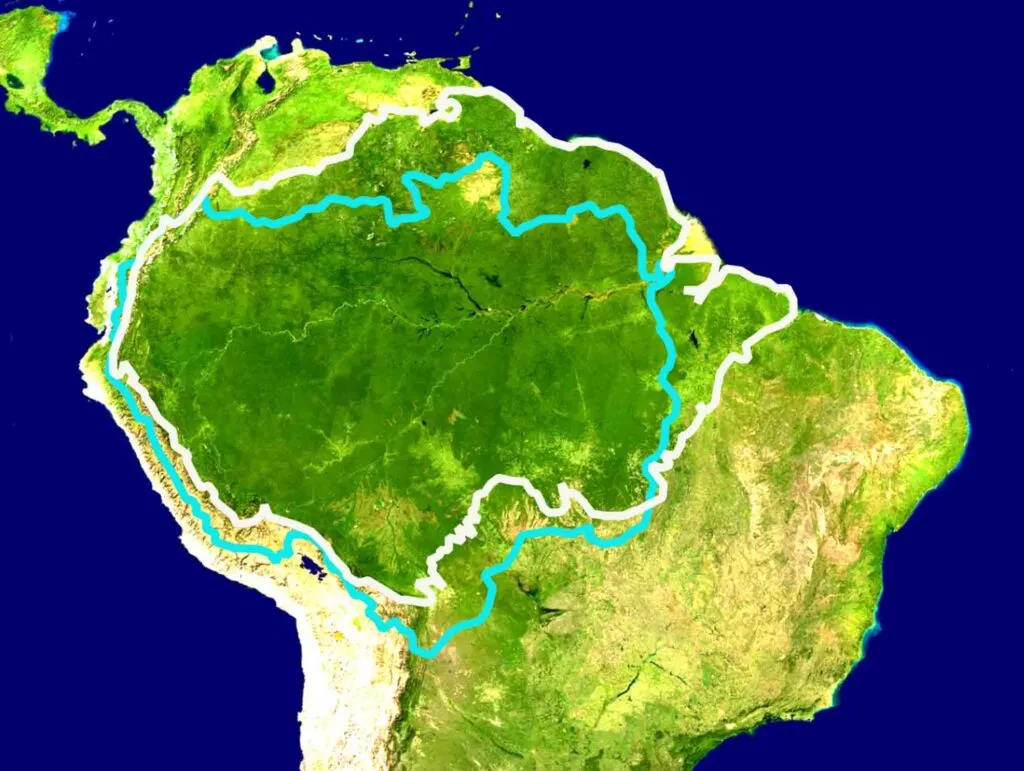
Amazon Rainforest Facts for kids: In addition to 3,000 freshwater fish species, the Amazon River Basin houses some of the most unique aquatic life forms on the planet, including electric eels, piranhas, and pirarucu – a fearsome fish up to 13 feet (4 m) long with teeth on its tongue!
Amazon River facts: The Amazon River is the world’s largest river by volume of water, reaching an elevation of 18,366 feet (5,598 m) above sea level. Besides, it is the second-longest river running for 4,000 miles (6,400 km), only after the Nile.
More than one-third of all known species on our planet live in the Amazon Rainforest. It’s the largest rainforest in the world and the richest in terms of biodiversity.
There are as many as 30 million people directly living off the Amazon Rainforest. They rely on the forest for food, clothing, and medicine.
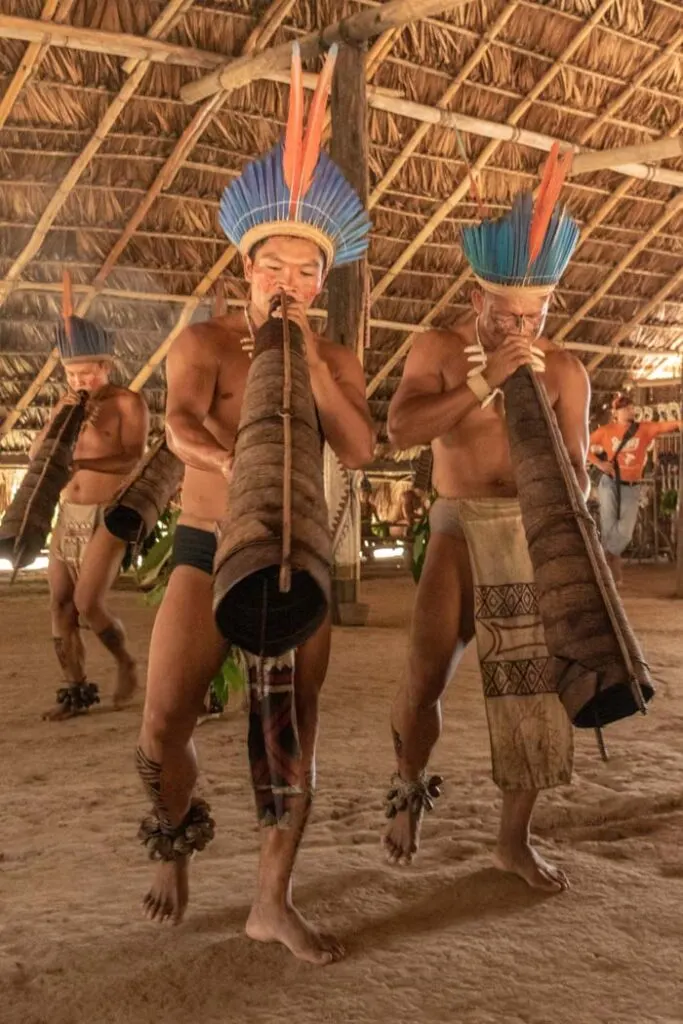
Indigenous tribes account for less than 2% of this number. Their populations have declined from about 9 million in the 16th century to below 300,000 today.
Between 400 and 500 indigenous tribes are living in the Amazon Rainforest, speaking 170 different languages. An estimated 50-60 tribes have had no contact with the outside world yet. About 240 of these tribes, comprising around 90,000 people, are in Brazil. The Tikuna tribe, with a population of 40,000, is the largest, while the Akuntsu tribe is the smallest, with only a few hundred survivors left.
One of the more incredible facts about the Amazon rainforest is that the complex ecosystem influences rainfall patterns as far away as the United States.
Among the Amazon Rainforest facts that reflect its sheer size is that areas that derive water from the Amazon produce a whopping 70% of South America’s GDP.
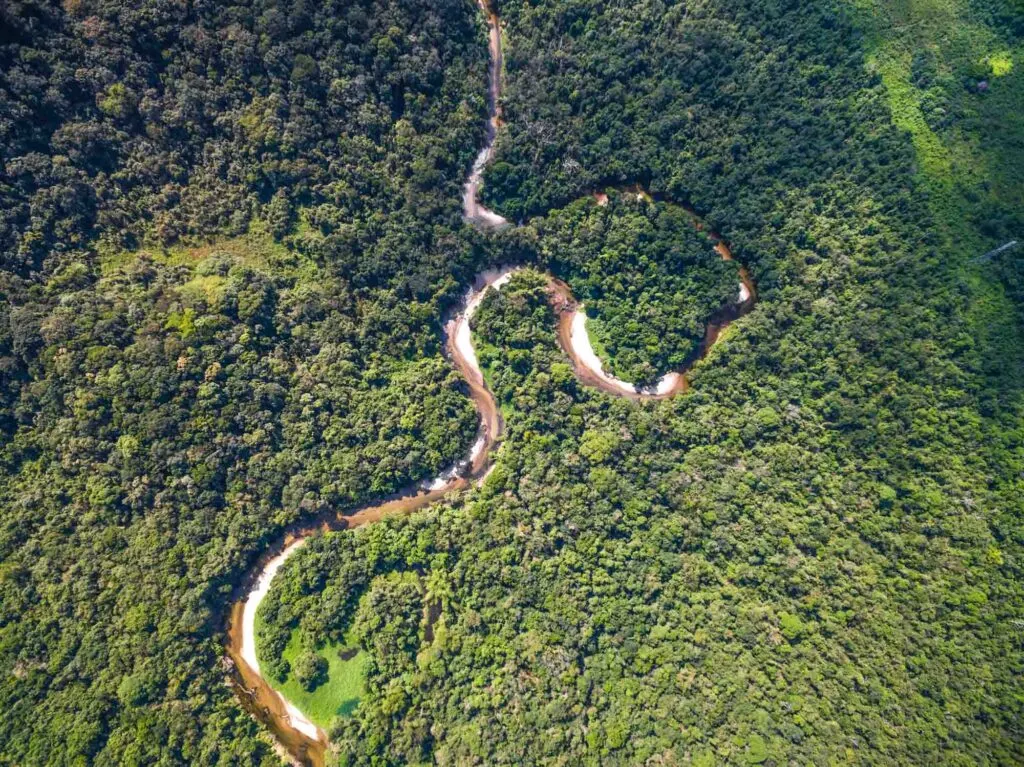
The 1.4 billion acres of rainforest known as Amazon is referred to as Earth’s lungs as it produces more than 20% of the world’s oxygen. Playing a vital role in curbing the effects of climate change by trapping up to 130 billion metric tons of carbon, the Amazon Rainforest also releases up to 7 trillion tons of water into the atmosphere yearly thereby recycling about 75% of its annual rainfall.
The Amazon forest floor is always in total darkness as the dense canopy prevents sunlight from reaching below. Up to 80% of wildlife in the rainforest make this canopy their home. The canopy is so thick that rainwater takes 10 minutes to travel from sky to ground!
Even though more than 2,000 new flora and fauna species have been discovered in the Amazon in the last two decades, sometimes at a rate of one every 3 days, numerous plants and animal species present in the Amazon Rainforest remain unknown to science. Large swathes of the forest have never been reached by humans.

Many species of plants in the wild can help to combat cancer, 70% of these kinds of plants are found in the Amazon Rainforest. Many more plants used by the natives to treat a variety of illnesses have never been subjected to scientific research.
One of the appetizing Amazon facts is that the rainforest’s trees produce more than 3,000 edible fruits. There are 40,000 plant species,16,000 different species of trees, and more than 390 billion individual trees – more trees than there are stars in the milky way – in the Amazon Rainforest.
Home to between 10 and 20% of all species known to humans, the Amazon Rainforest is the world’s most diverse region. Among the countless animals found in the forest are; 2.5 million insect species, 430 species of mammals, 1,800 bird species, and 450 different kinds of reptiles, including huge snakes.
The Amazon Rainforest is estimated to have been in existence for 55 million years, with human activity dating back to 11,000 years ago.
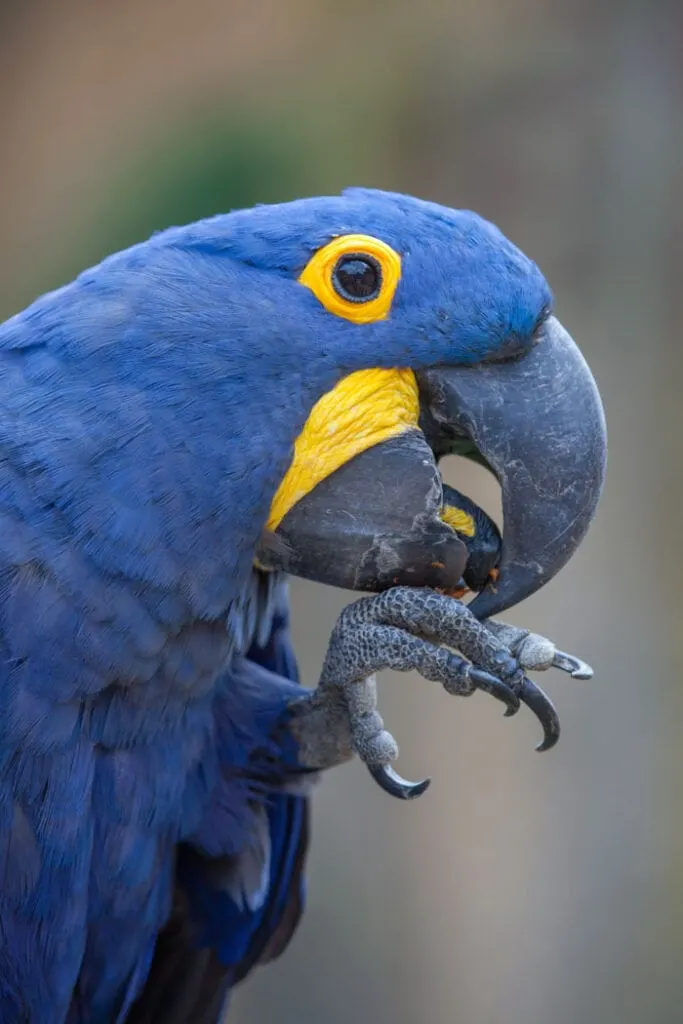
Read next: 35 Brazil Facts You Probably Don’t Know (Yet!)
In 2001 alone, biologists found over 1,100 different tree species within a 60 acre stretch of the Ecuadorian Amazon. By comparison, there are less than 2,500 tree species in Asia, Europe, and North America combined!
Illegal wildlife trade is a big business worth up to 20 billion dollars per year, and responsible for the increased poaching and smuggling in the region. A variety of animals and plants are taken abroad either and sold as pets or used for medicinal purposes. Illegal hunting of animals for food or for use as raw materials has led to many animals’ disappearance from the forest. Up to 20 million mammals, birds, and reptiles are harvested each year. These activities have a damaging effect on the complex Amazon ecosystem and have led to the endangerment of many Amazon species.
Deforestation, illegal extraction of natural resources, agricultural expansion, forest fires all pose significant threats to the Amazon Rainforest.
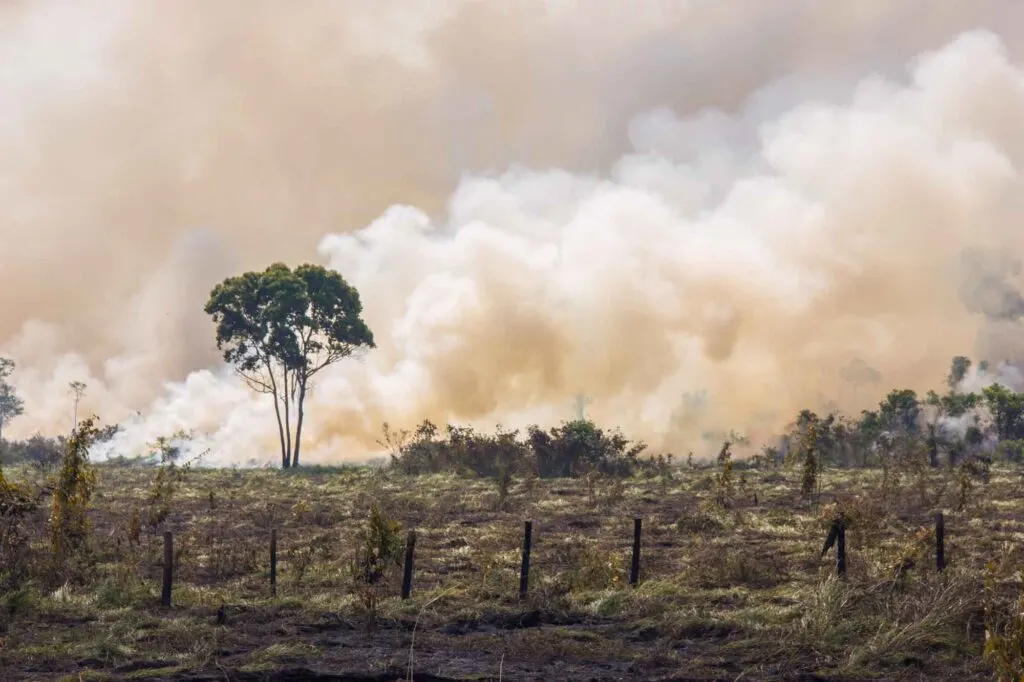
Due to a number of factors, including pressure from environmental groups and the application of technologies like satellite monitoring, deforestation in the Amazon has slightly declined. Still, at the current rate, it is estimated by the World Wildlife Fund that over a quarter of the Amazon Rainforest will be treeless by 2030. Over 232,000 sq miles (600,000 sq. km) of the forest has been destroyed since 1970.
With over 50 million cattle roaming the lands, cattle ranching accounts for about 80% of deforestation. Brazil alone exported 6 billion dollars worth of beef in 2018, more than any other country in history, making the Amazon Rainforest disappear at an alarming rate.
Loss of trees is devastating to the environment as the almost 12 years worth of global carbon emissions which the Amazon Rainforest traps will be released into the atmosphere.
As trees pull up water from the ground that ends up as rain, forest loss leads to less rainfall and higher temperatures resulting in flooding and droughts.
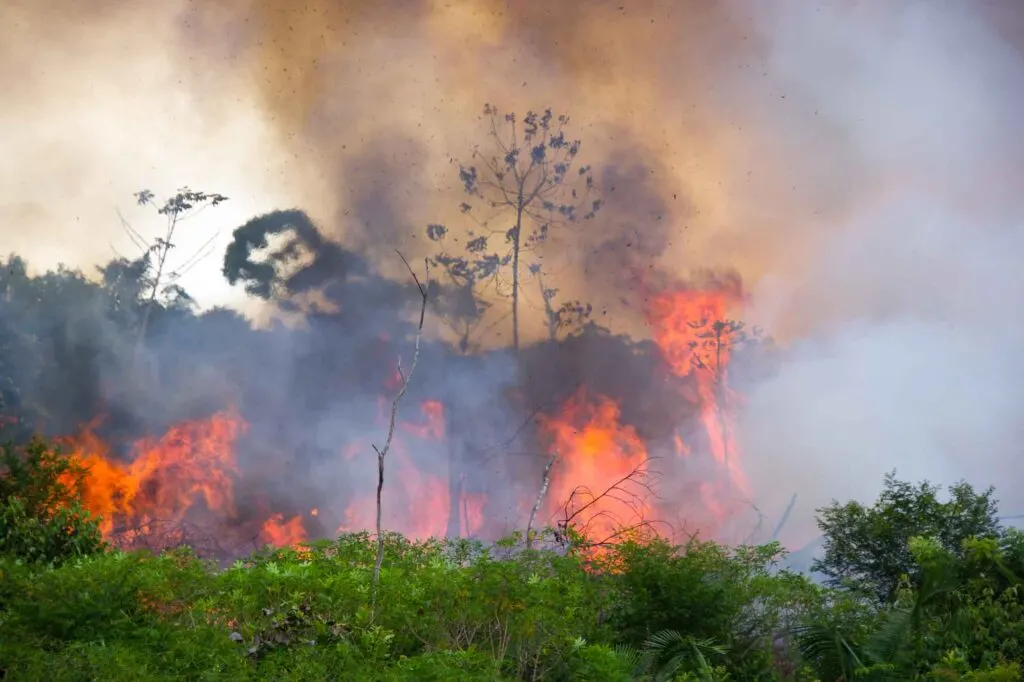
Climate change poses the most serious threat to the Amazon Rainforest. Scientists estimate that 75% of the rainforest will be irreversibly destroyed if Earth’s temperature rises by 37.4°F (3°C).
Loss of forest is also linked to the melting of ice sheets and degradation of permafrost, which speeds up the process of climate change.
Recent government plans to pave BR-319, a 550 mile stretch of road in Brazil, is another threat to the Amazon Rainforest. This project is expected to ease access to an area of forest bigger than the Netherlands and Germany combined, inevitably leading to further deforestation.
One of the more tragic Amazon facts is that by 2018 an estimated 17% of the forest cover had been destroyed. If this number reaches 25%, parts of the Amazon will be downgraded from rainforest to savannah.
Rains and floods wash away the mineral-rich soil needed to keep the Amazon fertile. In an incredible phenomenon, this is partly renewed by phosphorus-rich dust reaching the Amazon from the Sahara desert.
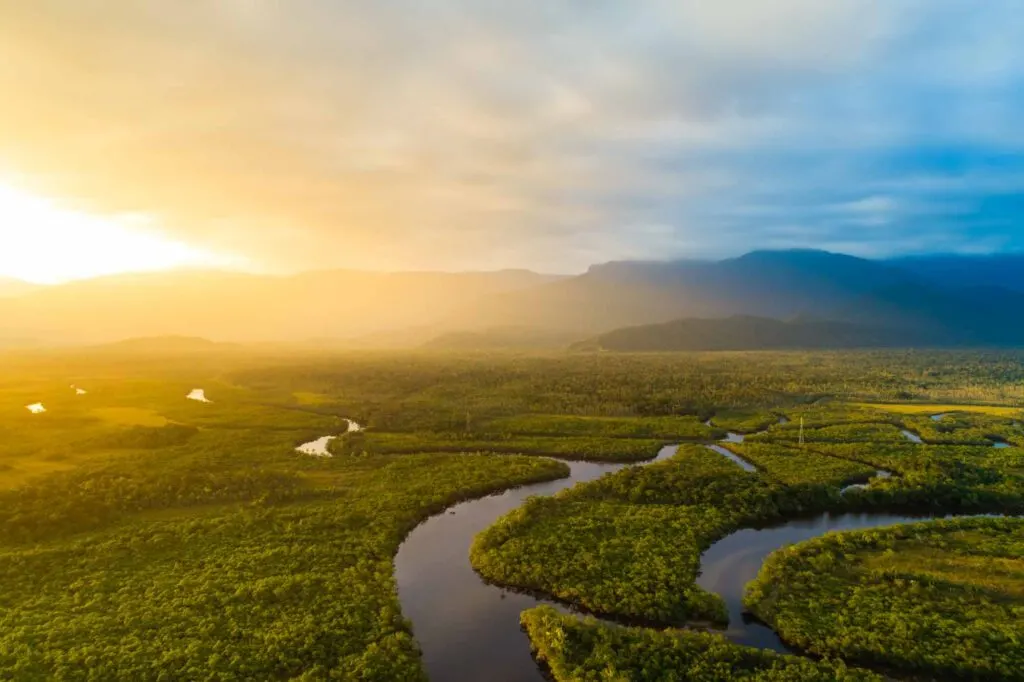
The Amazon Basin is the world’s largest drainage basin, comprising a mind-blowing 2,700,000 sq miles (7,000,000 sq km) and covering 40% of entire South America.
The widely accepted version of this tropical forest name involves Spanish explorer Francisco de Orellana who’s said to have named the Amazon after a battle with female warriors that reminded him of the Amazons of Greek mythology.
In 2016, scientists discovered a coral reef measuring more than 620 miles (1,000 km) at the Amazon River’s mouth. The reef is home to giant sea sponges, several fascinating fish, and coral. It was granted protected status as a result of preservation efforts by Greenpeace.
Thanks to the Amazon Rainforest, which covers a whopping 60% of Peru, that country has more types of birds than anywhere else on the planet, close to 2,000 species. There are more species of birds in Peru than there are in the whole of North America. Peru is also home to the 3rd most significant number of mammals, hosting about 300 species.
Wrapping up on the facts about the Amazon Rainforest
I hope you enjoyed reading these interesting facts on the Amazon Rainforest.
While there are much more info and data to share and discuss this singular place, I think this article on Amazonian Rainforest facts gave you a pretty good idea of how this tropical forest is and what threats it faces.
Did you enjoy this post about Amazon Rainforest facts? Then share it with a friend who would appreciate it too!
